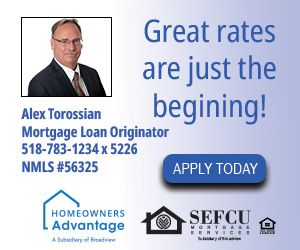Besides all of its immortal horses, legendary jockeys and masterful trainers, what makes Saratoga Race Course a one-of-a-kind horse racing venue is the countless larger-than-life personalities—the owners and high-rollers—who’ve frequented its stands. One such character is the legendary James Buchanan Brady, better known as “Diamond Jim.” When I first heard about Brady and the outlandish tales associated with him, I essentially pegged him as a fictitious character. While some of the stories of Brady’s excesses and exploits have been embellished or outright debunked, others have held water, providing authenticity to Diamond Jim’s iconic stature.
A true “rags to riches” story, Brady grew up poor, working as a telegraph messenger before acquiring his voracious appetite for the spoils of wealth. Born in New York City in 1856, Brady eventually secured work through the New York Central Railroad system. He went on to a lucrative career as a railroad-car builder and made shrewd moves on Wall Street that garnered him a fortune reported to be north of $12 million. With that enormous wealth came a penchant for diamonds. According to some reports, he owned more than 27,000 of them, including 31 curated sets—one for each day of the month. “Them as has ’em wears ’em,” Brady was quoted as saying in the National Turf Digest. Brady was even known to wear diamond-studded underwear!

Diamond Jim became a Saratoga Race Course regular in the 1890s. He owned a notable stable of racehorses, which included champions Gold Heels, who set a world record for 1¼ miles, and Accountant, the three-year-old champion in 1906. Upon his arrival at Saratoga in the summer of 1896, Brady “rented three cottages,” with more than two-dozen staffers, stocking his temporary homes with “hundreds of bottles of beer, wines and whiskies…along with huge quantities of such varied edibles as caviar and corned beef and cabbage,” noted Hugh Bradley in his 1940 book Such Was Saratoga.
Brady’s crowning achievement as a horse owner at Saratoga took place in 1906 with the aforementioned Accountant, a colt he purchased for $30,000. He was widely criticized for paying such a considerable sum for the horse, but Diamond Jim got the last laugh. That August, Accountant defeated Gallavant in the Saratoga Derby, a race described by the New York Times as the “biggest event of the Saratoga meeting for 3-year-olds.” From 1904-06, the Saratoga Derby was a richer race than the Travers Stakes, with a value to the winner of $9670 compared to $5800 for the Travers. Accountant earned Brady $81,925 for the year, prompting Diamond Jim to quip to his naysayers, “I didn’t know a thing, eh?”
I’m not the only writer that’s been mesmerized by Brady’s story. His life inspired the 1935 film Diamond Jim, which detailed his high-profile relationship with actress Lillian Russell, another Saratoga notable. Brady’s also long been considered the character “Big Jim” in the Bob Dylan song “Lily, Rosemary and the Jack of Hearts” from the 1975 album Blood On The Tracks. And author (and one-time General Electric Company publicist) Kurt Vonnegut, Jr. wrote Diamond Jim into his novel Jailbird, recounting a story about Brady winning a bet by eating four dozen oysters, four lobsters, four chickens, four squabs, four T-bone steaks, four pork chops and four lamb chops.
Brady died of a heart attack in 1917 at the age of 60—but not before leaving a giant-sized legacy. He considered his Saratoga memories among his fondest. “Goin’ up to Saratoga,” Brady once said, “is a hell of a great way to spend a month in the summer.” I couldn’t agree more.


